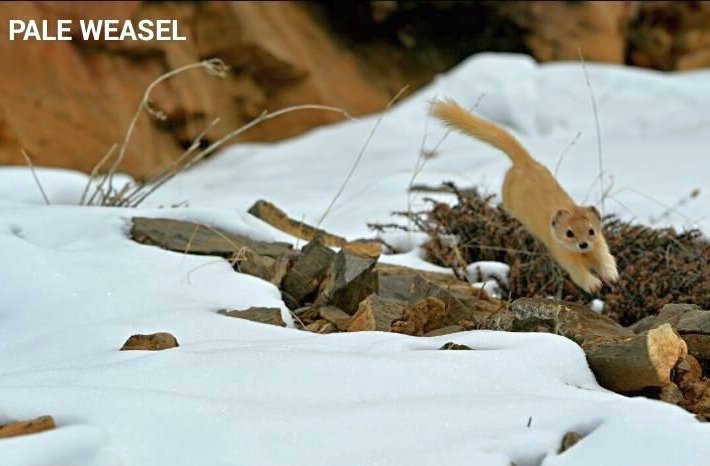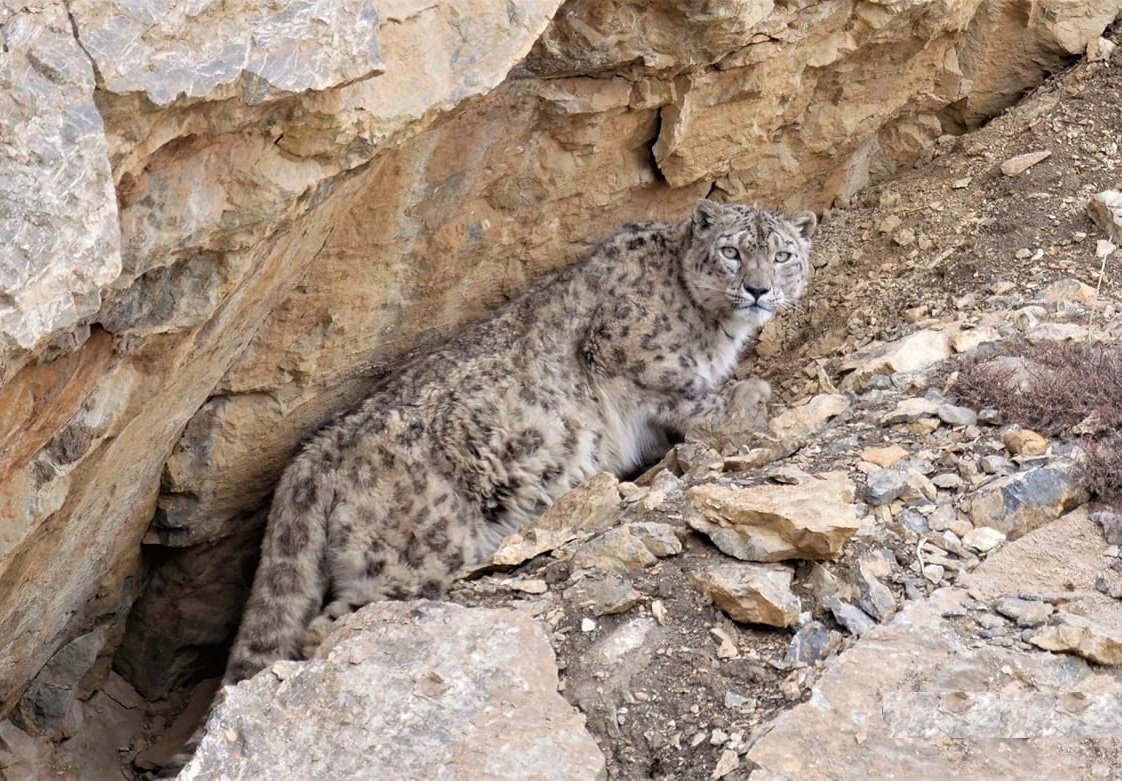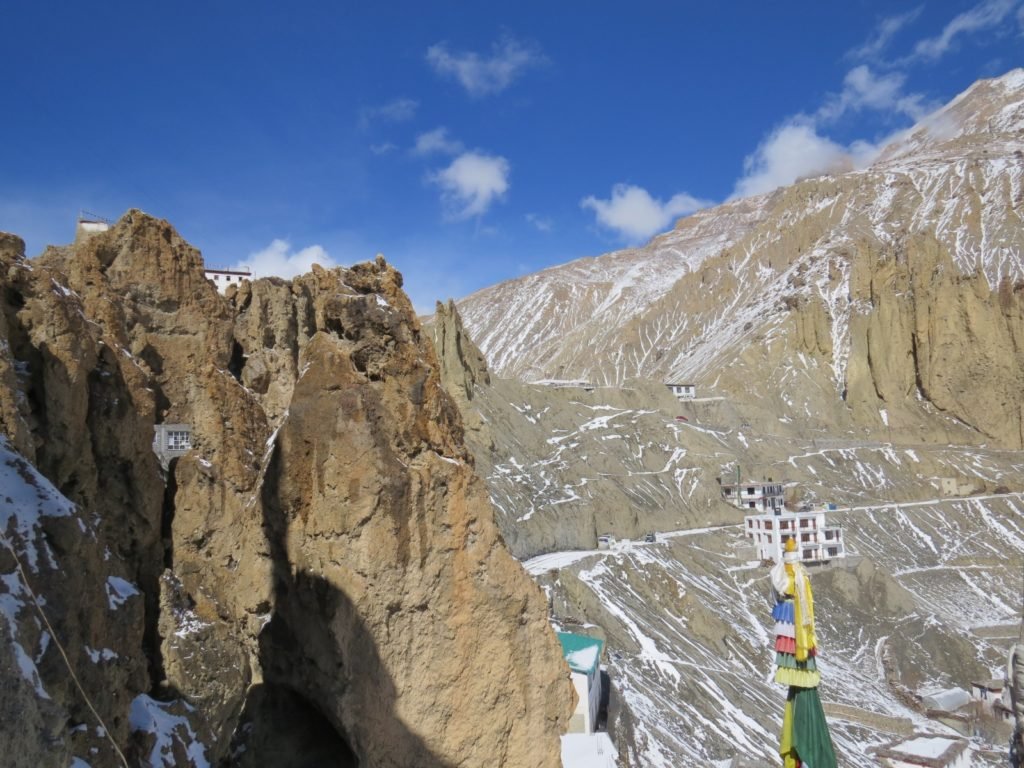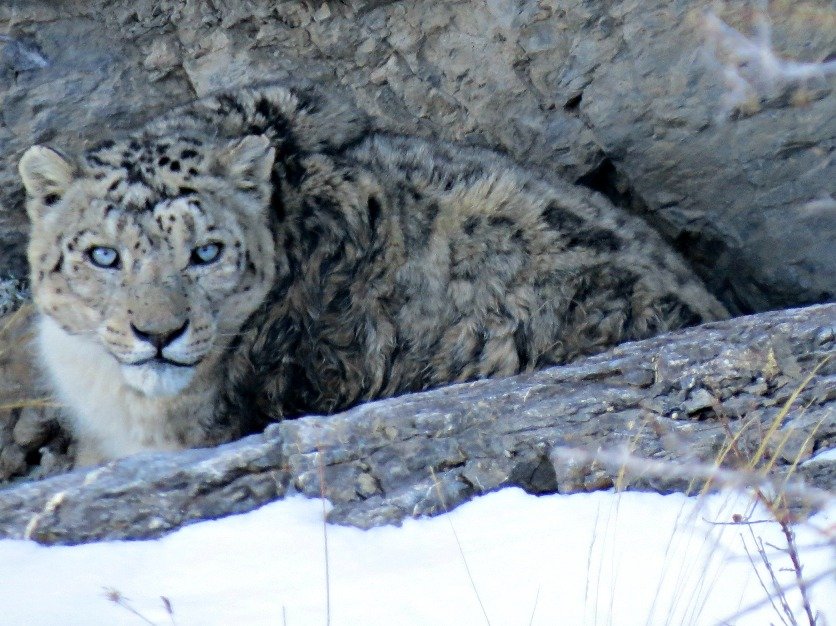
Beauty And Hardships Of Living in Kinnaur & Spiti Valley During Wintertime
I arrived at a hotel in Narkanda following the one of the most challenging journeys of my life in recent years. It was a nice hotel, and the owner and staff were friendly and very kind.
Kalpa
As soon as I reached my hotel in Kalpa, a cute husky came to visit. We had so much fun. He returned to his home after a while.
After staying in Kalpa for a few days, I felt a strong desire to visit Spiti valley. I wanted to stay in Dhankar Gompa and hike to Dhankar Lake, but I had heard that the trail was narrow and steep, and it was not easy to climb up the trail for someone like me.
I am afraid of heights, to the point where I can’t even ride the escalator in my home city because my lower abdomen hurts when the steps move up on the step chain.
A walk to Reckong Peo

These deep gorges near Chicham village are the sanctuary for Snow Leopards
I was planning to visit Reckong Peo for some time. One day I decided to walk down to Reckong Peo from my hotel in Kalpa. I walked down the slope for an hour and a half and reached my favourite restaurant, Little Chef.
There was a large group of Indian bikers, and it was really noisy. I did not like the crowd. Momo were out of stock, so I ordered the spring rolls instead, and they were delicious.
I did not feel guilty about eating because I walked for 4-5 km for having food at this place. After the food, I took a bus to Kalpa and went straight to my hotel room.
It was cold inside, but when walked outside and sat on the balcony to warm my feet in the sun, it felt so hot after a while.
The sky was azure blue, and the greenery was stunning to say the least, and I can hear the tunes of Kinnauri music coming from the nearby village, as well as the twittering of birds and barking of dogs. It was nothing but beautiful.
Fuliach festival in Barang
The next day, I went to a flower festival (Fuliach) in a village called Barang. It is located on the left bank of Satluj river, opposite to Reckong Peo, with my friend, his wife, and his niece.
I felt uneasy as I had to wear a Kinnaur Topi (headgear) — it was mandatory — to enter the temple as it was of a larger size than my head.
Barang is a large village located on a steeper (than Kalpa and Reckong Peo) slope on the opposite bank of the Sutlej River. Its population is approximately 2,500.
I had only seen the festival in pictures, but it was spectacular!
My friend who was dancing had so much fun.
Wildlife map of Lahaul & Spiti district of Himachal
Sangla Valley
My next stop was Kamru fort, Sangla Valley. Last time I visited the fort was about 5 years ago. The woman in charge of the key to the fort door welcomed us while she was knitting.
It was really beautiful all across the valley. Once I crossed the winding road after Karcham dam, the valley opens up wide open in the classic Himalayan U-shaped valley form.
Charang
Next, I visited Charang valley. It’s so cold! I went to the toilet in the open air for the first time in a while. The path from the village to the Rangrik Tungma Gompa (monastery) was so narrow that if you take a slight misstep, you’d fall into the Tidong rivulet. The people of Charang and nearby villages visit the Gompa even when it is snowing.
We were lucky enough to see a flock of ibex running up the cliff after drinking water from Tidong stream. There were ITBP soldiers at the entrance of the Gompa, and they greeted us first.
Charang village is a small village situated ~60 km from Reckong Peo at 3400m above sea level and with a population of about 200. The village was connected to a motorable road only in 2019. Before that the road was constructed till Shurting ITBP check post.
The village serves as base camp of parikrama trek around Kinnaur Kailash peak. It is connected to Chitkul village of Baspa Valley through the Charang-La (otherwise known Charang-Chitkul Pass).
The village is surrounded by towering mountains of the Greater Himalayas and houses are tightly packed together on a small flat area that juts out to the Tidong River.
Unlike the architecture of houses in Baspa Valley, most of the homes here are made of mud or stones, and the walls are covered with cow dung, similar to Tibetan houses. Tibetan culture has heavily influenced this region.
Infographic of Snow Leopard Habitat
Population estimate of Snow Leopards in Kibber WLS of Himachal Pradesh
Event Registration
Fields marked with an *are required
.png)





















































